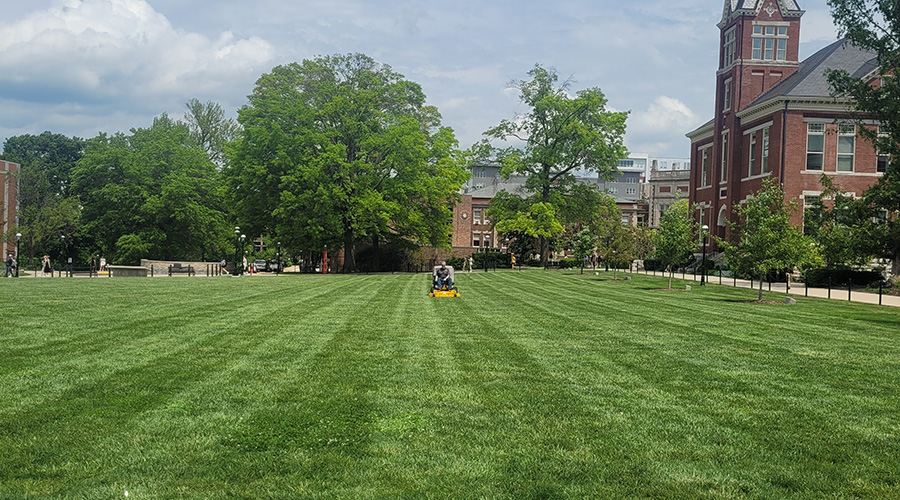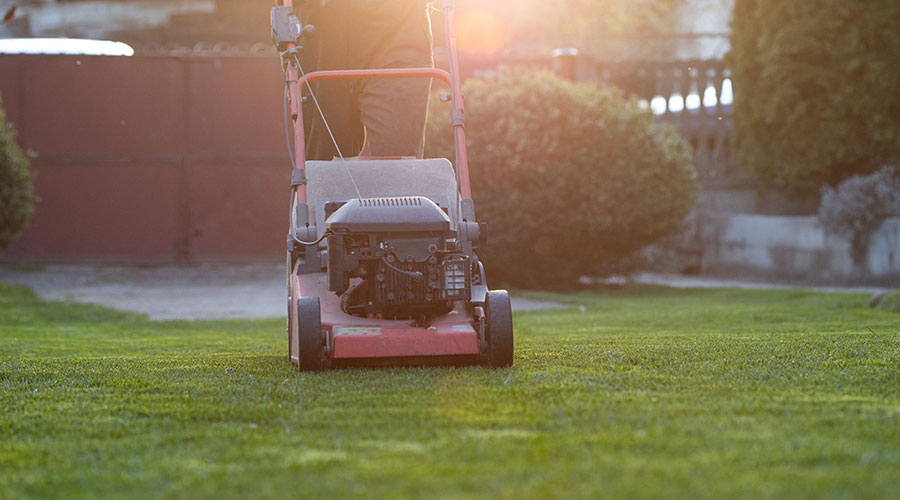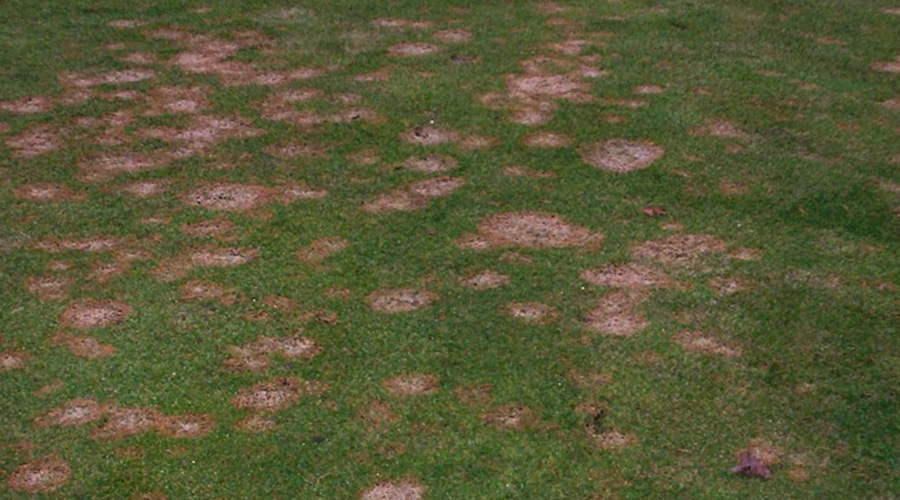Cutting to the Choice
Selecting the ‘right’ mowing equipment requires that managers stay abreast of equipment advances and involve staff in decisions
Mowing is the primary responsibility of most grounds care operations. Mowing equipment is more than key to getting the job done. Simply put, without mowing equipment, the job cannot be done, no matter how many employees are on board. But today, just having mowers is not enough to get the job done and meet expectations. Grounds care managers need to choose the right complement of equipment to fit specific needs and achieve the organization’s goals.
Blades
Cutting blades make a tremendous difference in the quality and efficiency of a cut, and most mower manufacturers continually work to improve cutting blade design.
Mulching blades have been around for some time. The objective of the mulching blade is to cut grass blades into smaller pieces that decompose rapidly. They eliminate the need to bag and haul away grass clippings. Also, smaller clippings are less likely to create unsightly windrows that must be raked or blown off.
Manufacturers have improved the effectiveness of mulching blades considerably. They have enhanced the angle of cut and mower deck design to perfect the mulching capabilities of today’s mowers.
Many mowers also now feature double blades. A machine with double blades can produce a more even cut, eliminating the need to cut an area twice to get the desired appearance.
Also available are blades with a partially serrated and angled backside, which cut clippings repeatedly before they fall to the ground.
Ergonomics
In grounds care industry, departments must do more work with fewer people. So workers must perform repetitive tasks, such as mowing, for up to eight hours a day and five days a week. As a result, ergonomic mower design has become a higher priority for manufacturers.
Today’s ride-on equipment has more comfortable seating and back support than previous models. And manufacturers have improved mowers’ shock absorption with independent suspension and vibration control to make equipment use less fatiguing.
Also, walk-behind and ride-on machines now feature better positioning of handles and controls, and manufacturers have improved the shape and placement of steering controls, button controls and handle grips to provide easier operation and greater comfort for long hours of use. The benefits of these changes aren’t just ergonomic. Easier operation has resulted in considerable savings for many departments when it comes to time and money for training.
Power and Speed
Not long ago, mowing equipment power did not exceed 18-20 horsepower (hp). But today, mowers offer up to 65 hp, with many models in the range of 25-30 hp. More power means higher blade-tip speed, which enables mower operators to produce a better quality cut more quickly.
Some landscapes limit the efficient size of mower decks. For example, not every site can accommodate an 8-foot winged mower or even a 72-inch walk-behind. In these cases, smaller machines that run faster might improve productivity.
Increased horsepower also is an important consideration when using attachments such as vacuums, blowers, aerators or plow blades with mowing equipment.
Fuel Efficiency
Manufacturers also have made advances to reduce emissions and noise. Federal, state and local regulations have largely driven these efforts to produce mowers that pollute less and are more community friendly. For example, some communities have ordinances that ban running machinery during certain hours of the day. Fuel efficiency also is constantly improving. Among the benefits for facilities from these advances are lower fuel costs and time savings from reduced refueling requirements.
Today’s mowers also feature improvements in wheel placement, tire design and overall weight dispersal, which affect mowing productivity and quality. With improved wheel placement, flotation tires and lower centers of gravity, mowers can operate on steeper slopes, decrease compaction during regular mowing operations and allow for safer mowing in wet conditions.
Turf damage is common when making tight turns around landscape elements, but improved tire design and wheel placement can eliminate much of this damage.
Durability
Mower decks are being designed to produce quality cuts on slopes and uneven terrain. Full-floating decks and anti-scalping rollers can be found as standard features on many newer mower models. These improvements lead to less turf damage and, in turn, fewer repairs, fewer weeds and a better-looking lawn.
Finally, manufacturers have improved the maintainability and durability of mowers. A few new features include improved air filters, built-in jacks for raising mower decks when changing blades, easier-to-read temperature gauges, and cutting decks that use blade spindles without grease fittings on the bearings.
They are simply replaced instead of continuously maintained, but replacement is infrequent. Some mowers require fewer tools to service, and in some cases, one tool does it all.
Buying new mowing equipment is a major decision. To make the right choices, managers should familiarize themselves with new technological advances. The next step is to ask employees some important questions regarding how the equipment will be used and serviced.
Finally, managers should compare brands, models and dealers to ensure they make the right purchase decision.
Specification Strategy
When making purchasing decisions regarding mowing equipment, managers should consider these issues in developing a strategy:
- Ask equipment operators about their equipment preferences. Ask them about specific features would make their jobs easier and make them more productive.
- Have operators test-drive each piece of equipment before purchase. It is best to test the equipment on site to a get a feel for how it reacts under specific conditions.
- Consider the size and terrain of areas to be mowed. Consider landscaping and site features that affect mowing. Choose a complement of mower sizes that will most efficiently get the job done. Newer, smaller mowers might actually produce a better quality cut more quickly, making the entire job less time consuming. They also might be more versatile around landscaping and trees, as well as easier to transport. Using a smaller but faster mower also might eliminate the need for multiple pieces of equipment.
- Determine how operators will transport equipment. Will the mower or tractor fit on a trailer with other equipment? Is a new trailer necessary, or is a new truck necessary to pull the trailer and mower?
- Consider how the mower could be used in the off-season. Are attachments available that could make the machine more useful year-round?
- Compare ride-on vs. walk-behind mowers. Each has advantages and disadvantages. Price is a substantial difference, but if all other factors are equal — if the rider will produce the desired quality — most employees that mow every day prefer to ride. When comparing cost, managers should remember to figure in the cost of the employee. If the employee must walk behind a mower every day, it might be tough to keep that employee happy and productive.
- Compare the quality and features of various brands. Mower manufacturers are very competitive. They all try to outdo each other with technology, and there are a variety of mowers to choose from. So managers should check out all of them before purchase. In some cases, it can be more efficient for a department to use all of the same brand equipment, but if a particular brand or model offers a unique and desirable feature, it might be worth switching brands.
- Due to increased competition among manufacturers, managers might be able to take advantages of incentives and financing available for some brands or models.
- Consider ease of service. A mechanic should inspect equipment for maintainability. If a mower is easy to maintain, it is more likely to receive the care necessary to keep it in good working condition.
- Find a full-service dealer so repair services are convenient and parts are readily available. Check the dealer’s references to find out about their quality and speed of service. Find out how quickly a broken mower could be fixed during hectic spring months, and ask if loaners or rentals are available.
|
Related Topics:











